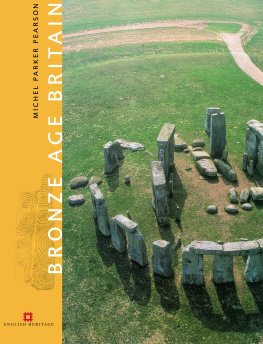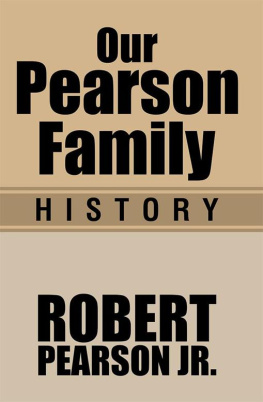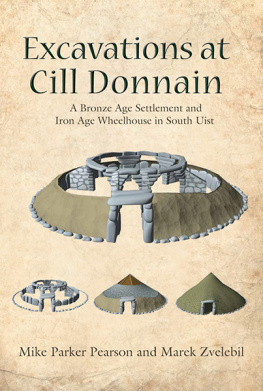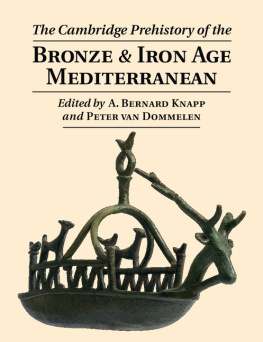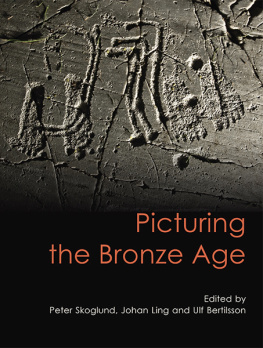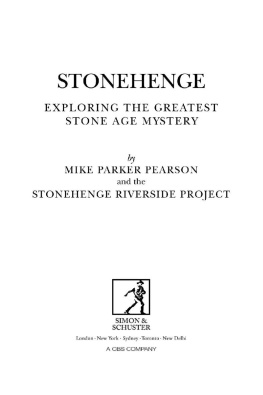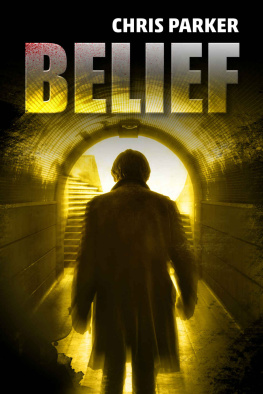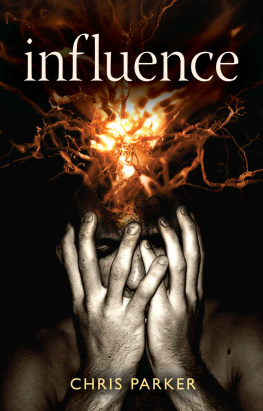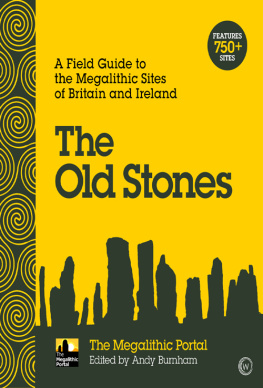Parker Pearson Michael - Bronze Age Britain
Here you can read online Parker Pearson Michael - Bronze Age Britain full text of the book (entire story) in english for free. Download pdf and epub, get meaning, cover and reviews about this ebook. publisher: Pavilion Books, genre: Religion. Description of the work, (preface) as well as reviews are available. Best literature library LitArk.com created for fans of good reading and offers a wide selection of genres:
Romance novel
Science fiction
Adventure
Detective
Science
History
Home and family
Prose
Art
Politics
Computer
Non-fiction
Religion
Business
Children
Humor
Choose a favorite category and find really read worthwhile books. Enjoy immersion in the world of imagination, feel the emotions of the characters or learn something new for yourself, make an fascinating discovery.
- Book:Bronze Age Britain
- Author:
- Publisher:Pavilion Books
- Genre:
- Rating:5 / 5
- Favourites:Add to favourites
- Your mark:
- 100
- 1
- 2
- 3
- 4
- 5
Bronze Age Britain: summary, description and annotation
We offer to read an annotation, description, summary or preface (depends on what the author of the book "Bronze Age Britain" wrote himself). If you haven't found the necessary information about the book — write in the comments, we will try to find it.
Bronze Age Britain — read online for free the complete book (whole text) full work
Below is the text of the book, divided by pages. System saving the place of the last page read, allows you to conveniently read the book "Bronze Age Britain" online for free, without having to search again every time where you left off. Put a bookmark, and you can go to the page where you finished reading at any time.
Font size:
Interval:
Bookmark:


This book would not have been possible without the discoveries and hard work of archaeologists, both amateur and professional. Geoff Wainwright and Stephen Johnson asked me to write it. John Barrett, Mark Edmonds, Karen Godden, John Moreland, Niall Sharples and Roger Thomas read and commented on various drafts. The following people provided information, help or comments: Richard Avent, John Barnatt, David Breeze, Andy Chapman, John and Bryony Coles, Jane Downes, Andrew Fleming, Claire Foley, Daryl Garton, Jon Humble, Eddie Lyons, Con Manning, Roger Mercer, Jacky Nowakowski, Ken Osborne, Julian Parsons, Francis Pryor, Colin Richards, Joe White and Mike Yates. Pictures supplied with kind permission of the following:
Alan Braby and Ian Armit: .
Andrew Fleming: .
Andy Lewis: .
Birmingham Archaeology/Gwilym Hughes: .
Canterbury Archaeological Trust: .
.
Charles-Tanguy Le Roux: .
Colin Richards: .
Corinium Museum, Cirencester: .
Crown Copyright (Historic Scotland): .
Crown: RCAHMW: .
Crown Copyright. NMR: .
Professor David Gilbertson of the School of Geography, University of Plymouth: .
Derrick Riley: .
English Heritage: .
English Heritage Central Archaeology Service: .
English Heritage. NMR: .
English Heritage/Peter Dunn: ,
English Heritage/Skyscan Balloon Photography: .
English Heritage/Louise Woodman: .
English Heritage/Jeremy Richards: .
English Heritage/Charlie Waite: .
Essex County Council: .
Fenland Archaeological Trust/Francis Pryor: .
Frank Gardiner/Essex County Council: .
John Barrett/Richard Bradley/Martin Green: .
Ian Hodder: .
Lysbeth Drewett: .
M Parker Pearson: .
Niall Sharples: .
Northamptonshire Archaeology Unit: .
Oxford Archaeological Unit/Alistair Barclay: .
Oxford Archaeological Unit/Ros Smith: .
Paul Halstead: .
Peter Dunn: .
Peter Dunn/English Heritage Central Archaeology Service: .
Robert Bewley: .
Roger Mercer: .
Rosemary Robertson: .
Sheffield Galleries & Museums Trust: .
Somerset Levels Project: .
Stornoway Museum/Mark Elliott: .
Tim Darvill: .
Wessex Archaeology: .
European prehistory has been classified into three ages since 1836 when a Dane called Christian Jurgensen Thomsen worked out that an age of stone preceded an age of bronze which came before an age of iron. This is known as the three-age system and, with modifications, has remained with us ever since. The Stone Age has been divided into three: an Old Stone Age (Palaeolithic); Middle Stone Age (Mesolithic); and New Stone Age (Neolithic).
Since the three-age system was devised, archaeologists have realized that these divisions on the basis of technological material make little sense when attempting to discuss what actually happened in the past and how ancient communities were organized. The Mesolithic, or Middle Stone Age, was a time of gatherers and hunters, people who lived off wild resources. It makes more sense to talk about the New Stone Age as the period of the earliest farmers. Equally, the Bronze Age is a problematic category in social and economic terms. There was considerable continuity across the division between the end of the Neolithic and the beginning of the Bronze Age. The Late Bronze Age also shares much in common with the Early Iron Age. Archaeologists still use these terms but only as shorthand to refer to particular spans of time. The terms Neolithic and Bronze Age are no longer considered to be so helpful for our understanding of what happened. As archaeologists discovered that iron was used in the Bronze Age and that metals were in use during the Stone Age, so they realized that the three-age system had outlived its usefulness.
We are everywhere surrounded by the past. Practically all of the British Isles has been settled for thousands of years. The traces of this occupation are often hard to find. Every successive generation has chosen, to some degree, to preserve or destroy what came before. Others have unwittingly destroyed the remains of the past by cultivating or building on top of hidden remains. Also the agencies of wind, rain and frost, as well as natural decay, have exacted their toll. Sometimes all that is left of a prehistoric settlement is a scatter of worked flints in the soil of a ploughed field. In other, more fortunate circumstances, the foundation trenches, post-holes and pits, and the remains of pottery and bone waste have survived. In the best circumstances, we might be lucky enough to find organic remains such as wood surviving in waterlogged conditions.
The sites on display to the public represent only a fraction of what has survived, with these remains forming only a tiny part of what once existed. Most of our prehistoric remains are unremarkable as places to visit. A flat field may hide a prehistoric enclosure which is only visible from the air at certain times of year. Head for some of the places mentioned in this text and you might find a featureless field, a bypass or a new housing estate. Most prehistoric sites that are worth visiting sit in splendid isolation; islands of prehistory that have survived owing to some lucky accident or other. In cases like the large burial mounds, some were protected by tradition, others were simply too large to flatten without machinery, or were too far from later settlements to be worth robbing for their building stone. For the more adventurous, there are landscapes where prehistoric remains have survived over considerable areas. At the back of this book is a list of some of the more interesting prehistoric sites which are open to the public.
There are books about prehistoric Britain, prehistoric Ireland and prehistoric Europe. This is a book which is about all of these. Ireland and Britain shared the same cultural elements for thousands of years, and the prehistoric past of one cannot be fully appreciated without the other. Equally, these islands were only separated from the rest of Europe in the physical sense. In social terms they were part of Europe and throughout this part of prehistory there were seaborne contacts in both directions. While the direction and intensity of such ventures certainly fluctuated over 4000 years, so many of the changes in the British Isles were linked to events on the European mainland. The changing intensity of these contacts can be used as an index of social change. To write about prehistoric England would make little sense since such a concept did not exist.
Finally, the style of most introductory books on archaeology is that of the authoritative narrative, a mass of observations presented as a solid body of incontrovertible evidence. What interests me are the different perspectives for interpreting the past and the ways in which evidence may be selected to support various theories. Archaeologists are often afraid to show others that there is disagreement and controversy about what happened. Yet this is how archaeology really advances, by proposing different interpretations, critically examining other scholars evidence and re-evaluating conventional wisdom. This is a major part of what makes archaeology fun and interesting, so I have tried to bring out some of the controversies that are around at the moment.
This book covers both the Neolithic (the time of the earliest farmers) and the Bronze Age. However, the terms Neolithic and Bronze Age have been used as little as possible. In their place I have used a different sequence which describes the main social characteristics of successive eras as prehistorians see them today. The first farmers are equated with the Late Mesolithic and Earliest Neolithic ().
Font size:
Interval:
Bookmark:
Similar books «Bronze Age Britain»
Look at similar books to Bronze Age Britain. We have selected literature similar in name and meaning in the hope of providing readers with more options to find new, interesting, not yet read works.
Discussion, reviews of the book Bronze Age Britain and just readers' own opinions. Leave your comments, write what you think about the work, its meaning or the main characters. Specify what exactly you liked and what you didn't like, and why you think so.

